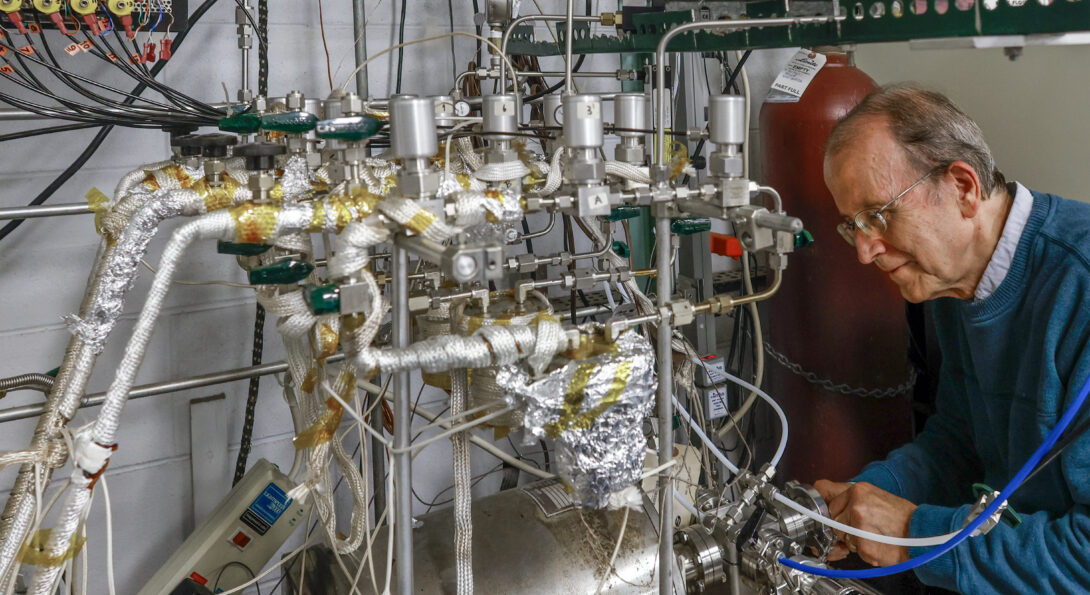Takoudis, Diwekar’s review paper selected as top 10 in Nanomaterials journal

text Heading link
Developments in the realm of atomic layer deposition (ALD) have shown the need for the development of ALD theory in order to design new materials theoretically and reduce the length of time of the experiment.
“If you start doing experiments using new materials, it may take a long time to complete the experiment, whereas we can predict what will happen if new materials are used,” said Richard and Loan Hill Department of Biomedical Engineering Visiting Professor Urmila Diwekar.
Where Diwekar is well-versed in theory, Professor Christos Takoudis has been working on the experimental side of ALD for the past 20 years.
Takoudis and Diwekar’s review article, titled “Recent Advances in Theoretical Development of Thermal Atomic Layer Deposition: A Review” was selected as one of the top 10 papers in Nanomaterials in 2022.
Using computer aided molecular design of materials, their paper focuses on recent computational advances in thermal ALD and discusses how theoretical methods can make experiments more efficient. ALD is a vapor-phase technique to deposit thin-film materials on various substrates through sequential and self-limiting surface reactions. The thin films produced by ALD are deposited using chemical gas or vapor phase species, called precursors, in a cyclic fashion. Thus, ALD is often called an advanced form of chemical vapor deposition (CVD). However, unlike CVD, ALD consists of alternating pulses and purges of the precursors and co-reactants, resulting in the deposition of the desired film with tunable thickness and composition.
In thermal ALD for the synthesis of new materials, the temperature is the main driving force for the process. One of the terms in ALD studies is the temperature window, defined as the temperature range over which the self-controlled growth would occur at a constant rate. The researchers noted that uncontrollable growth can happen when temperatures are above or below this window.
The functionalization and property-tuning of different novel surfaces is typically done at ALD temperatures of 150–350 degrees Celsius, although some studies reported temperatures outside this range. For instance, for the organic and heat-sensitive substrates, the reactor temperature should be adjusted accordingly to prevent the deformation and degradation of the substrate. Room temperature ALD has been reported on collagen materials for biomaterial functionalization.
UIC Chemical Engineering PhD alumna Mina Shahmohammadi, University of Texas Permian Basin Chemical Engineering Assistant Professor Rajib Mukherjee, and UIC Restorative Dentistry Associate Professor Cortino Sukotjo also contributed to this paper. Shahmohammadi is the first author.